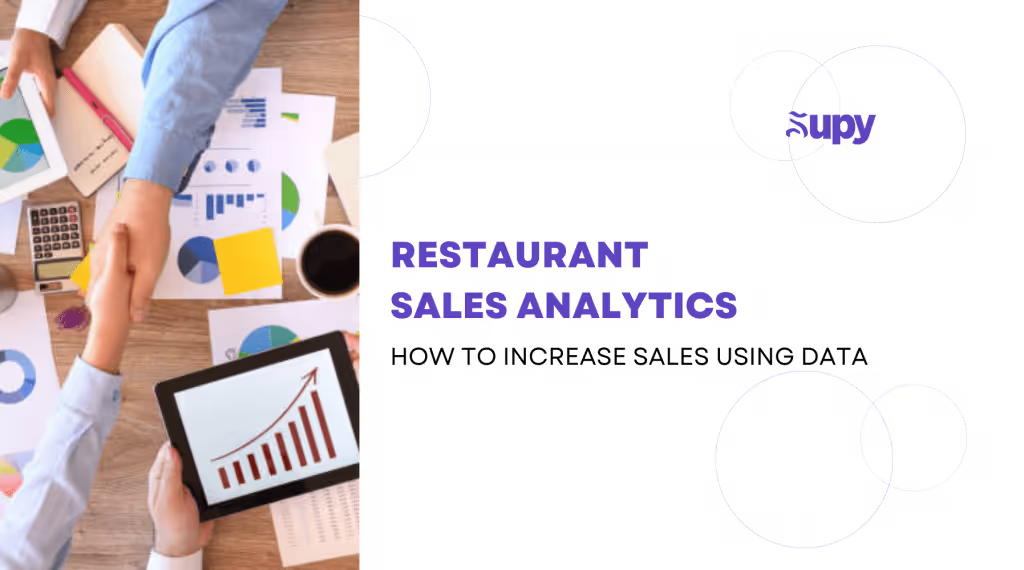Designing an Efficient Central Kitchen for Multi-Location Restaurants

For any restaurateurs looking to expand their business across multiple locations, investing in a central kitchen is definitely the way to go! These centralized hubs allow the food prep and distribution processes to be consolidated under one roof, allowing restaurant chains to streamline their operations. For restaurants running multi-location operations, this model offers several key advantages, from improving inventory management to contributing to labor efficiency!
Contents
- The Core Principles of Efficient Central Kitchen Design.
- Managing Costs During the Central Kitchen Design Process.
- Optimizing Workflows for Central Kitchens.
- Logistical Strategies for Supporting Multi-Location Operations.
- Leveraging Technology for Central Kitchen Efficiency.
- Optimizing Your Kitchen Layout
- Future Trends in Central Kitchen Design for Multi-Location Restaurants.
- Supy’s Role in Designing an Efficient Central Kitchen for Multi-Location Restaurants.
- Conclusion.
- About Supy.
Imagine a mid-sized restaurant chain with five locations, each managing its own food preparation processes, struggling to maintain quality and consistency across its menu offerings. By shifting to a central kitchen model, the company can significantly reduce its food waste and labor costs. The new centralized model allowed for easier bulk purchasing and lower ingredient costs, while the streamlined processes ensured speedier preparation. This efficient hub became the backbone of their multi-location operations, improving consistency in menu offerings and overall service speed.
An optimized central kitchen also plays a vital role in the quality control process, ensuring that the same high standards are met across all branches. This consistency not only strengthens brand reputation but also improves customer satisfaction. Intrigued to learn how else central kitchens can help you expand your brand? Read on to learn more!
1. The Core Principles of Efficient Central Kitchen Design
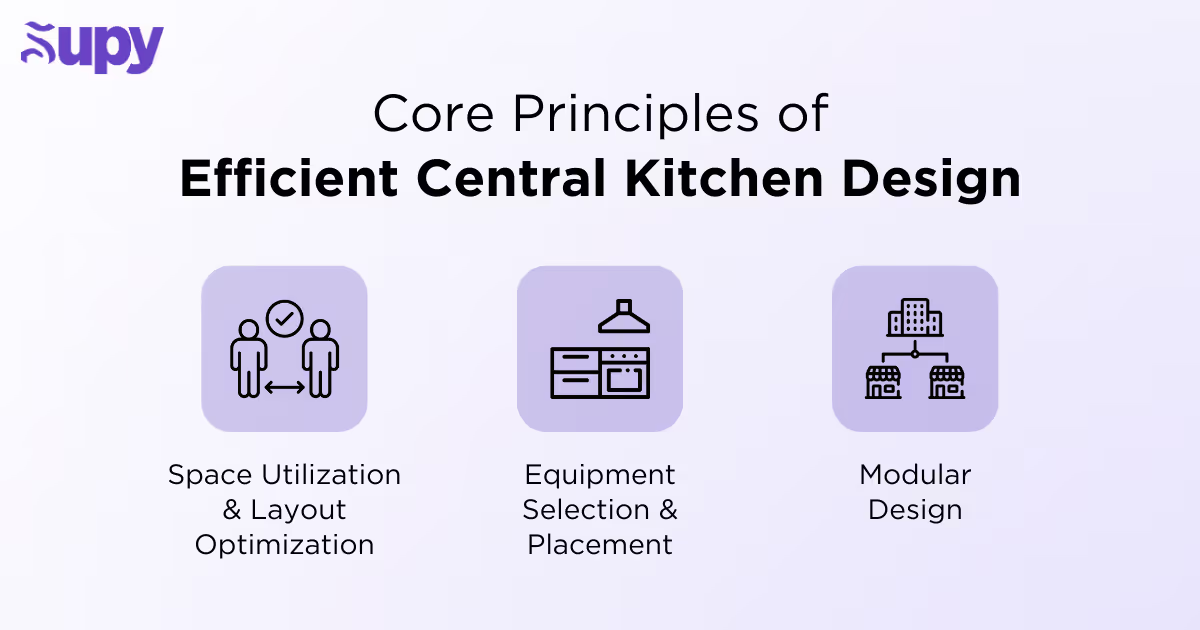
Designing a central kitchen that serves multiple locations requires a few key strategies:
The first principle of central kitchen design is space utilization and layout optimization. By properly planning out your kitchen space, you minimize the need for unnecessary movement and reduce the overall amount of time your staff needs to spend on their tasks. A well-planned kitchen layout focuses on creating distinct zones for preparation, cooking, packaging, and storage, ensuring a smooth flow of materials and personnel.
The second principle of central kitchen design is equipment selection and placement. By investing in multi-functional, energy-efficient pieces of equipment and strategically placing them in to support high-volume production, you can maximize your workflows. By thoughtfully placing equipment near prep stations or in other easily accessible areas, you can minimize disruptions to the process.
Finally, the third principle of central kitchen design is the importance of following modular design. As restaurant chains continue to grow, planning for scalability is crucial. Modular kitchen setups, which allow for easy expansion and reconfiguration, allow your central kitchen to accommodate increasing demand without forcing you to do a complete overhaul of the situation.
2. Managing Costs During the Central Kitchen Design Process
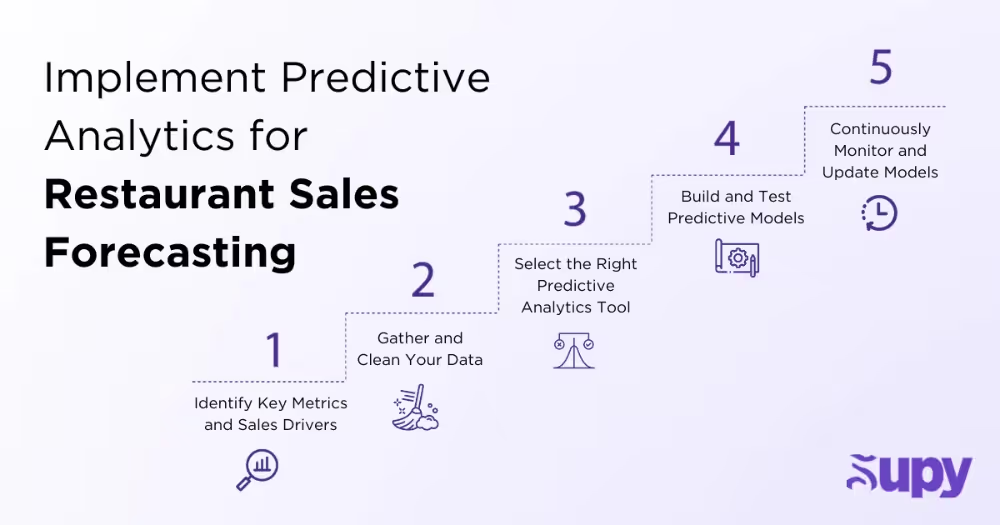
There is, of course, one aspect of designing your own central kitchen that leaves most people stumped: cost management. Here are a few ideas on how to get the kitchen of your dreams without breaking the bank!
Think about your energy costs. As you set up plans for your new central kitchen, think about including energy-efficient systems to keep your energy related costs low. This includes installing things like optimized lighting systems, smart appliances, and energy management systems that are specifically designed to cut down on electricity and gas usage.
You should also consider how to deal with any potential sources of waste. In most kitchen environments, you can do this by implementing sustainable practices, like precise portion control and efficient ingredient storage, to minimize food wastage. This, of course, further drives down unnecessary costs.
Further, you can also make large savings by implementing a centralized inventory management and bulk purchasing system. By consolidating orders for each new location, restaurants can take advantage of supplier discounts and minimize transportation expenses. A well-organized central kitchen allows for real-time inventory tracking and advanced demand forecasting, reducing the risk of overstocking and spoilage.
Although investing in a central kitchen may initially seem very expensive, your return on investment (ROI) can be substantial. Let’s hypothetically assume one restaurant chain invested $500,000 in a central kitchen facility. It’s not uncommon to expect such a system to yield something like a 15% reduction in food costs or a 20% cut in annual energy expenses.
Over five years, you would find that these savings easily more than offset the initial amount of money that was put into the facility, yielding a healthy ROI while supporting the smooth expansion of multi-location operations.
3. Optimizing Workflows for Central Kitchens
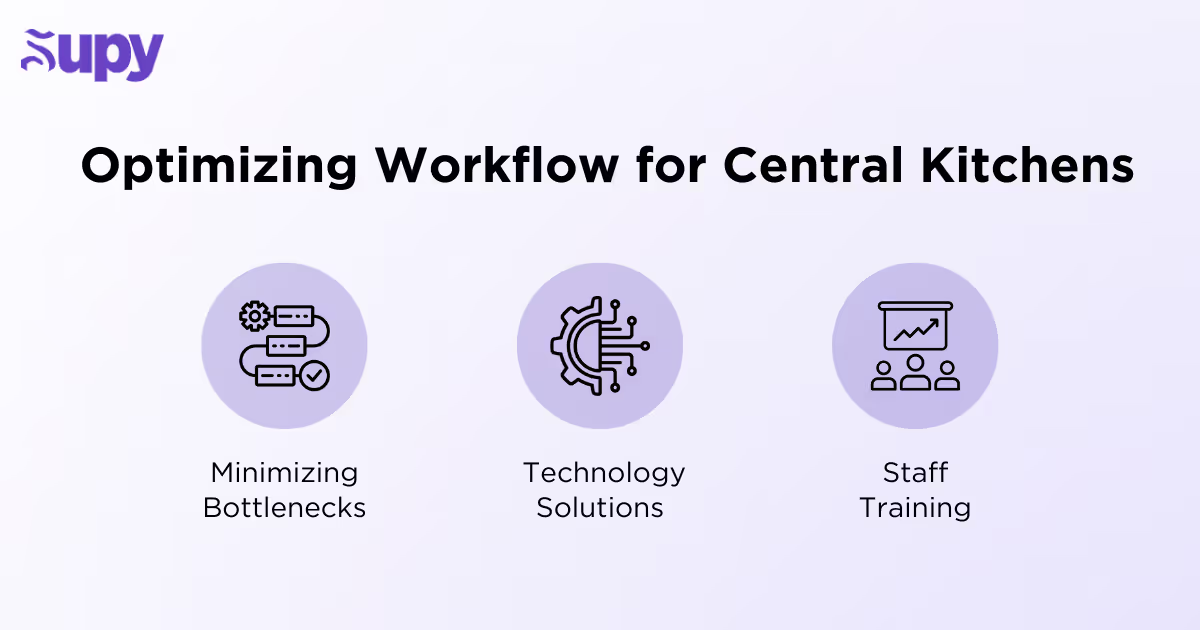
Next, it’s time to think about how you can optimize your workflows. This is a critical step to consider, as it directly impacts your central kitchen’s efficiency levels, cost control, and overall performance.
The optimization process starts with designing systems that reduce bottlenecks, ensuring that each stage of production in your kitchen moves seamlessly into the next. In a central kitchen design, establishing a logical sequence to tasks—such as food preparation > cooking > packaging > distribution—is key to minimizing delays. Mapping out these processes and organizing workstations based on task flow allows for smooth transitions and maximizes productivity.
Next, think about how you can implement technology solutions to make things run smoothly in your kitchen. Cloud-based inventory management systems, kitchen display systems (KDS), and real-time communication tools are all designed to centralize the process of tracking your orders, ingredients, and inventory across multiple locations. This integration allows for faster decision-making and reduces the risk of miscommunication or delays in production.
Finally, don’t forget to keep your staff in the loop! Training staff on efficient workflow management is an equally important part of an optimized workflow system. Host regular training sessions and team-building activities to teach your team about best practices for process optimization, how to use any new technology, and how to coordinate between departments to make sure everyone is informed and on the same page.
Although it’s no easy task, by focusing on optimizing your workflows, your commercial kitchen can learn how to maximize its efficiency, reduce costs, and make it easier than ever to manage multiple locations.
4. Logistical Strategies for Supporting Multi-Location Operations

Once you’ve got your workflows in place, it’s time to think about logistics—after all, an effective chain of logistics is critical to determining multi-location success.
One of the most important logistical knots you’ll need to straighten out is making sure your items are delivered and distributed on time. This involves setting up a well-coordinated delivery schedule that aligns with the needs of each restaurant location, considering peak hours and demand fluctuations. It’s a good idea to make the use of modern technology for real-time delivery tracking to keep your items fresh and secure.
You’ll also need to think about how to overcome logistical challenges such as traffic congestion, spoilage, and scheduling conflicts:
- You can resolve any traffic issues by optimizing delivery routes with software designed to consider traffic patterns to find the fastest and safest route.
- To combat spoilage, use refrigerated trucks and precise temperature control systems during transit to preserve food quality.
- Efficient scheduling software allows central kitchens to synchronize their production and dispatch with each restaurant’s needs. This is a great way to reduce downtime and waste.
By implementing these strategies, central kitchens can enhance efficiency, reduce waste, and ensure a consistent supply chain for multi-location operations.
5. Leveraging Technology for Central Kitchen Efficiency
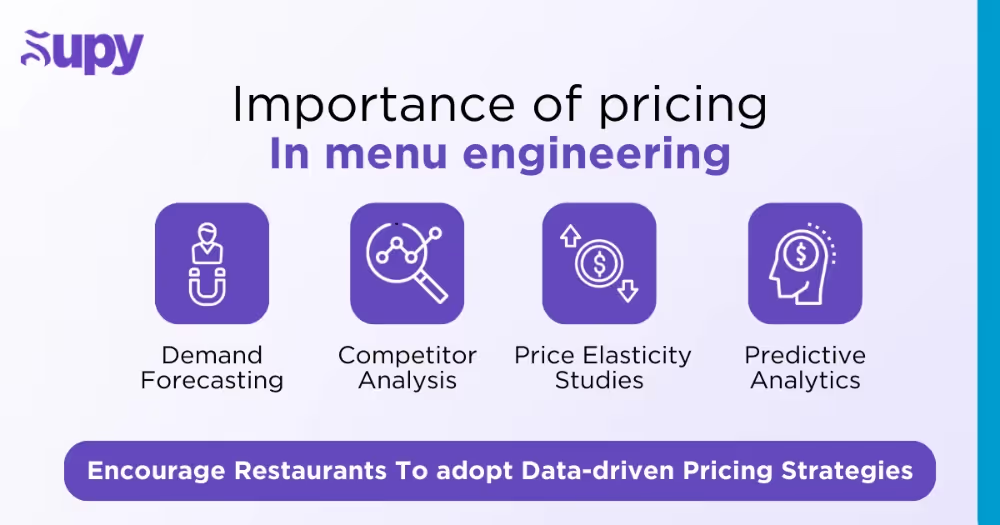
In today’s competitive restaurant landscape, kitchen management software (like Supy’s!) can play a pivotal role in streamlining your daily processes. By automating routine tasks such as inventory management, order processing, and staff scheduling, restaurants can reduce their risks of overall human error and keep everything running in tip-top shape.
There are incredible benefits to automation and digital inventory systems; with these, your team can maintain optimal stock levels, prevent over-ordering, and minimize food waste. These systems can be customized to track ingredients in real-time, ensuring that the right resources are available as and when needed.
But perhaps one of the most significant advantages of tech integration is the ability to track your data in real-time. This allows restaurant operators to make informed, data driven decisions into things like their production volume, labor utilization, and inventory levels, allowing managers to allocate their resources more effectively.
6. Optimizing Your Kitchen Layout
One of the key aspects of kitchen design is creating logical zoning areas. These are clearly designated areas for preparation, cooking, and storage. By separating these functions, kitchens can reduce the risk of cross-contamination and ensure that their workflows remain streamlined. For instance, by placing the storage zone close to areas of food preparation, you can minimize the time your staff spends on retrieving ingredients, thus enhancing operational speed.
Designing the kitchen’s flow is another critical aspect. A well-thought-out kitchen layout encourages the smooth movement of people and ingredients, minimizing bottlenecks or the need for unnecessary movement. Efficient central kitchen designs will place areas of high traffic, such as cooking and plating areas, such that staff can easily transition between food prep and food service, without stepping on each other’s toes!
It's also a good idea to factor in any plans for expansion into your central kitchen’s innate design. As your operations grow across multiple business locations, your central kitchen may also need to scale up production. By designing a flexible layout with modular equipment and adaptable spaces, you’re saved the headache of a major overhaul down the line. By planning for both your immediate and future needs, you can make sure your business maintains smooth, scalable operations at every level.
7. Future Trends in Central Kitchen Design for Multi-Location Restaurants
As the restaurant industry continues to evolve, future trends in central kitchen design are increasingly influenced by the rise of ghost kitchens and delivery kitchen. These virtual dining concepts prioritize delivery and takeout, necessitating a redesign of central kitchens to accommodate higher production volumes. This shift pushes operators to create layouts that support rapid meal preparation and packaging while minimizing waste.
Innovations in automation and robotics are also reshaping central kitchen operations. With automated cooking appliances and robotic systems, restaurant operators can streamline repetitive tasks, reduce labor costs, and ensure a consistent quality of food. Integrating these technologies into off-site kitchen design allows for smoother workflows and enhanced productivity, making it easier for small businesses to scale their operations.
Finally, there’s increasing potential for AI and IoT integration in central kitchen management. With AI, restaurant owners and managers can analyze their customers’ preferences and demand patterns, optimizing inventory and reducing food waste. IoT devices also enable real-time monitoring of equipment and conditions, ensuring that food safety standards are consistently met. This data-driven approach can significantly enhance operational efficiency and provide valuable insights for better decision-making.
By staying ahead of these trends, restaurant operators can create efficient, scalable systems that meet the demands of today’s dynamic foodservice landscape.
8. Supy’s Role in Designing an Efficient Central Kitchen for Multi-Location Restaurants
Supy is designed to offer several comprehensive services that can help you in your journey toward streamlined multi-location restaurant management. Here’s how Supy may be able to help uncover data-driven insights:
- Centralized Data Storage: Instead of having multiple servers installed at every business location, why not store your data remotely on the cloud for a more convenient business experience? With all your relevant data backed up on the cloud, restaurant owners and managers can proactively manage their waste, optimize their restaurant operations, and expand their sales channels with confidence.
- Streamline Your Internal Supply Chain: With Supy’s central kitchen management software, you can designate any of your branches to prep meals that are then packaged and distributed to the restaurant's various locations. With this feature, you can receive orders from different restaurant branches, review stock, and change, confirm, or reject orders!
- Clear Order Statuses: For centralized kitchens to operate effectively, you’ll need to monitor your order statuses. With Supy’s central kitchen management software, you give your workers the freedom to manage their orders digitally without ever having to call or email the boss again!
- Batch Productions & Transfers: Once your business is up and running, you may suddenly find yourself struggling to meet demand! For anyone who finds them in this happy position, it’s important to start prepping in bulk branches to boost your operational efficiency and keep new customers coming back for more!
9. Conclusion
In conclusion, the design and operation of your central kitchen can play a pivotal role in the success of multi-location restaurants. Throughout this article, we explored essential strategies for layout optimization, streamlined operations, and effective cost management. These principles not only enhance productivity but also ensure consistency and quality across all restaurant sites. By leveraging thoughtful central kitchen design, operators can support their multi-location operations, driving growth and maintaining customer satisfaction.
For restaurant owners looking to transform their operations, we encourage you to sign up to Supy's newsletter! Additionally, if you’re interested in seeing how else our solutions can streamline your centralized kitchen operations and make managing multiple locations a breeze, why not book a free demo today? And to learn more about worry-free restaurant task management for each of your restaurant locations, head on over to the Xenia app!
Take the first step towards optimizing your multi-location restaurant strategy with Supy today!
10. About Supy
Supy is the leading restaurant management software designed specifically for multi-location establishments and franchises. Offering exceptional features such as real-time inventory monitoring, smart procurement systems, and advanced analytics, Supy empowers restaurants to effectively handle their diverse operational needs. Whether it's centrally managing stock levels or enhancing supply chain partnerships, Supy equips restaurants with the essential tools to excel in a competitive landscape.
For valuable insights, check out Supy’s ebook: The Ultimate Guide to Reducing Food Costs in Multi-Branch & Enterprise Restaurants.
Interested in learning more? Book a demo with Supy today and get started on your journey towards a more efficient and profitable future.




